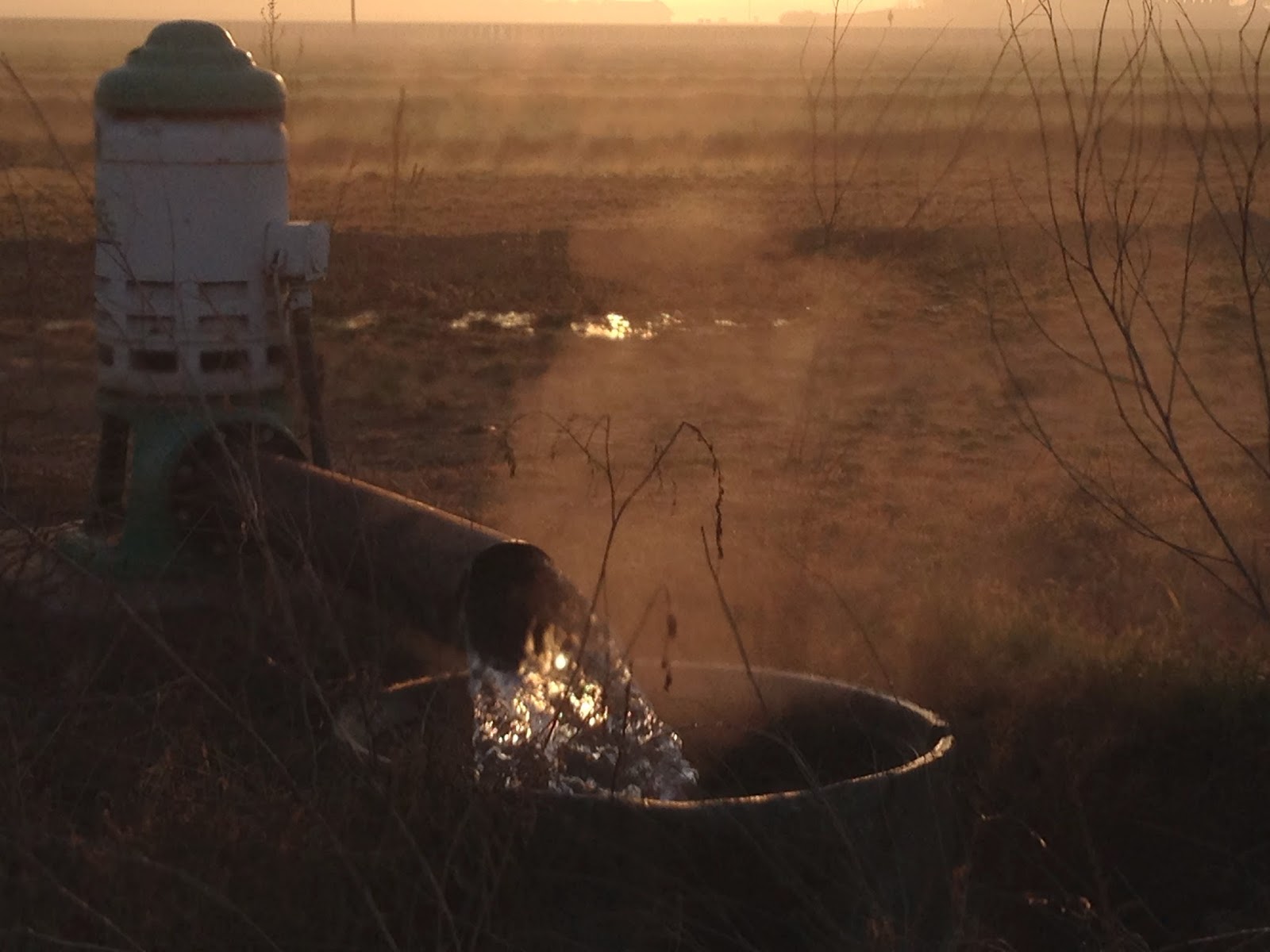One surprise has been that the nearby Tranquillity Irrigation District was cut off by the state about ten days ago. This was a surprise because they have per-1914 water rights which are among the most secure water rights in California. A director for the district told me someone is Sacramento said, 'the cities need the water.' Wow! I tell my students that water goes to votes. This proves that.
This is going to be a problem in Tranquility. They can sue. But, as one farmer said, "by the time this is settled in court we'll be broke." The immediate problem is that some crops have already been planted. Fields have been prepared for planting. Hundreds of dollars per acre of tractor work, water and fertilizer have been invested in anticipation of this Spring's planting. [Note- one of the reasons our goofy government policies are hard to live with is farmers have to make decisions months ahead of time. I can't wait until April to plant a cotton crop. I have to prep ground and order seed months ahead of time. More about that in a future post.]
Tranquility Irrigation District only has enough wells for about 40% of its ground. So, 60% of the district will have to be fallowed. How many jobs will be lost? How much food and fiber will not be produced? How much work wasted? The co-op cotton gin is looking at a ten thousand bale loss of production. Remember, this is one small district. Multiply this across the heart of California's farm country.
The bureaucrat's comment, "the cities need the water." reminded me of my first op-ed, twenty years ago. Here are some excerpts-
Water Supply is Everyone's Concern
by Paul H. Betancourt
The Fresno Bee
October 12, 1993
Before we try to solve California's water problems by taking water from farmers, we must ask ourselves, "Who is the end user of agricultural water?...
According to the Water Education Foundation it takes 14 gallons of water to produce a single orange and 48 gallons of water to produce a single gallon of milk. Multiply this by 30 million people eating three meals a day and it becomes obvious that it takes a tremendous amount of water to produce, transport and prepare our food...
There are three ingredients to any sane water policy in California:
First, we must conserve what water we have...It may sound like a platitude, but water conservation is everyone's responsibility. This is not just a rural or an urban problem. While agriculture uses the most [developed] water, we cannot solve our water problems if only agriculture conserves water.
Second, we must develop our water supplies to meet the needs of our growing population. California has grown fifty percent we built out last reservoir. We cannot let a minority environmental activist community continue to cripple appropriate water development. We must solve present problems and prepare for the future.
Finally. we must deal with the issue of water transfers. Many in the urban and environmental community see this as a cure-all for supply problems. Many rural people are scared that productive areas such as the San Joaquin Valley are going to be stripped of water...like the Owens Valley...Water-rights holders must not be robbed of these contracted rights.
It is very short-sighted to try to solve the state's water supply problems by just taking water from agriculture. We are all in this together. We must work it out together.
Did you see the date of this piece. Maybe Solomon was right and there is "nothing new under the sun." Here we are twenty years older and no closer to a solution.
See Y'all next week.


No comments:
Post a Comment